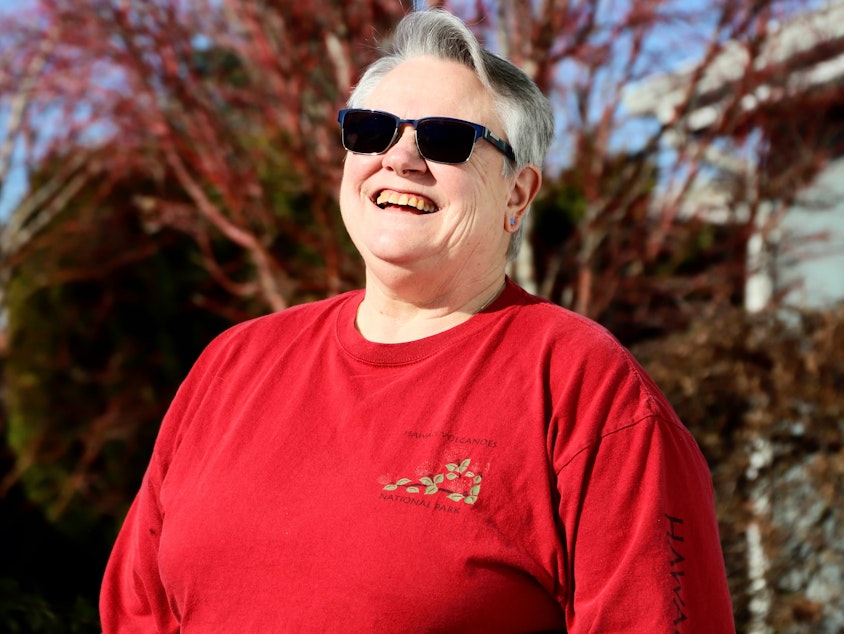Creepy or convenient? Grocery store merger aims to improve 'personalized' shopping

"State of the Cart" is a four-part series with each story looking at a proposed $25 billion merger of two of the nation's largest supermarket chains through a different lens.
If you hate grocery shopping, you’re not alone.
Penny Maibie would rather spend her time fly fishing than doing chores like grocery shopping. But everyone’s got to eat. Before the pandemic, Maibie and her late wife would go to the store.
“It was the source of many quarrels when we would go to the store,” Maibie recalled. “It’s like, is this an every aisle trip, or are we just getting the things we need?”
At the height of the pandemic, Maibie turned to online shopping for food and never looked back. These days, Maibie tackles that chore with just several clicks from the comfort of her Maple Valley home.
When Maibie logs on to her Fred Meyer account, her shopping history pops up.
Sponsored
"Here’s my cart, here’s my 'buy again,' these are the things I have bought from them before," she said, referring to the screen in front of her.

Online shopping, she said, is about more than convenience.
“I can avoid — like, there was ice cream on sale — I can avoid those things when I’m in the store," she said. "Impulse buying."
Because the app tracks Maibie’s purchases, she receives digital coupons that include her favorite brands.
Sponsored
“They have my habits nailed down,” Maibie said. “They know what I buy and how frequently I buy it. And then they offer me discounts on those things. It’s almost a little creepy.”
This is what the industry calls personalized pricing. Grocery giants Kroger and Albertsons view personalized pricing as a way to improve customers' experience with e-commerce.
When company officials with Kroger and Albertsons announced their merger plans last October, they said the proposed $25 billion deal was a way to expand customer reach.
Speaking before a Senate subcommittee last fall, Kroger CEO Rodney McMullen defended the merger with Albertsons. He said combining the companies would create efficiencies leading to lower prices.
Because discounts are based on collected data, the combined grocery chains would have more information on shoppers that they could then use to offer personalized discounts that more accurately reflect individual shopping habits and needs.
Sponsored
“It’s looking at each household, what’s important to them, and personalizing offers for that particular household,” McMullen said.
If approved, the merger would give Albertsons-Kroger a combined customer base of 85 million households.
Stores like Target and Walmart had a strong online presence even before the pandemic. But the pandemic forced grocery companies like Kroger to catch up.
“We have heard from consumers who feel like retailers have gotten better at online offerings,” said Shelley Balanko, senior vice president at Hartman Group in Bellevue. The company analyzes consumer behavior and tracks food culture trends.
Balanko said part of appeal of online shopping is the ability to curate choices for consumers.
Sponsored
“The extent to which they can ease some for that cognitive burden, the better, as well as the physical burden, you know, sorting through products in the store or traipsing through the aisles,” she said.
At the same time, consumers aren’t abandoning brick and mortar stores altogether. Balanko said this was evident when Covid restrictions eased. And that can cause some disconnect in their shopping experience.
“They would say, ‘I can’t get certain products on the app but if I walk into the store, I can get them,’ or vice versa,” Balanko said. “So, for the consumer, they just want to move seamlessly between their digital virtual world and their in-person physical world.”
While grocers look to grow the e-commerce side of business, physical stores aren’t going away. That’s because the online experience doesn’t engage your senses the way a physical store does, Balanko said. Also, historically grocery stores anchor their communities.
“It truly is social," Balanko said. "I believe that retailers today still have the opportunity, if not responsibility to think about how they are centers for communities and that the choices they make short term and long term can either build communities or erode them.”
Sponsored
Back in Maple Valley, Penny Maibie has just pulled up to the store to pick up the order she placed earlier in the morning. A clerk comes out and starts to load her car.
People choose their stores for different reasons. It could be price, location, or food quality. Maibie said she and her late wife Barb picked their store because they liked the meat quality there.
“I knew the store because I knew I could be efficient," Maibie said. "I had gotten accustomed to shopping there because that’s where Barb liked to shop. So, I can’t say that it’s really brand loyalty as much as a familiarity and comfort.”
That’s why, unlike other company mergers, Maibie says grocery mergers seem more personal. Most people aren't thinking about antitrust issues when they're out buying groceries. In the end, they just want their stores to be in sync with their needs and routines.




